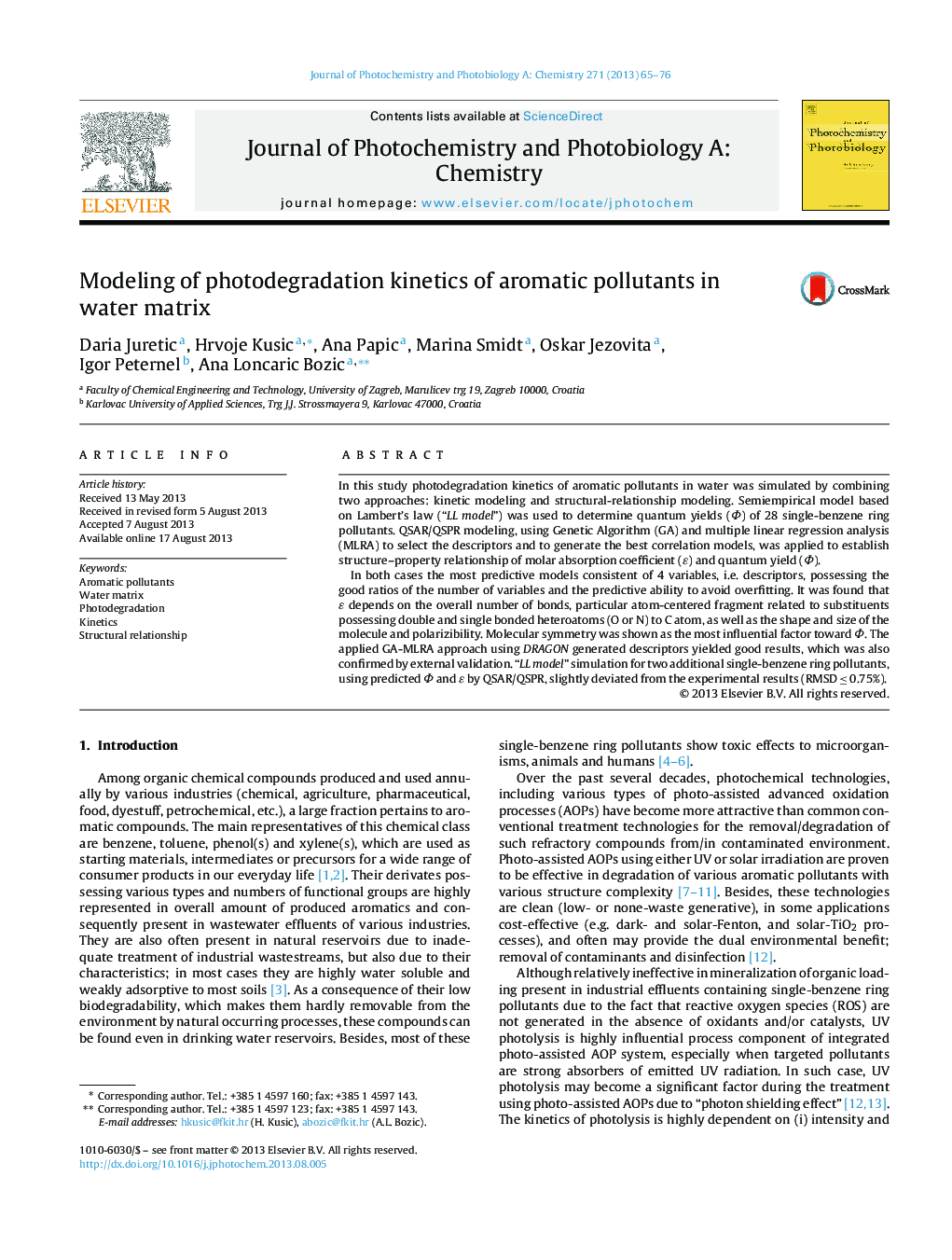| Article ID | Journal | Published Year | Pages | File Type |
|---|---|---|---|---|
| 27283 | Journal of Photochemistry and Photobiology A: Chemistry | 2013 | 12 Pages |
•We study the modeling of photodegradation kinetics of aromatic pollutants in water.•We combine kinetic modeling and structural-relationship modeling approaches.•We establish structure–property relationship for molar absorption coefficient (ɛ).•We establish structure–property relationship for quantum yield (Φ).
In this study photodegradation kinetics of aromatic pollutants in water was simulated by combining two approaches: kinetic modeling and structural-relationship modeling. Semiempirical model based on Lambert's law (“LL model”) was used to determine quantum yields (Φ) of 28 single-benzene ring pollutants. QSAR/QSPR modeling, using Genetic Algorithm (GA) and multiple linear regression analysis (MLRA) to select the descriptors and to generate the best correlation models, was applied to establish structure–property relationship of molar absorption coefficient (ɛ) and quantum yield (Φ).In both cases the most predictive models consistent of 4 variables, i.e. descriptors, possessing the good ratios of the number of variables and the predictive ability to avoid overfitting. It was found that ɛ depends on the overall number of bonds, particular atom-centered fragment related to substituents possessing double and single bonded heteroatoms (O or N) to C atom, as well as the shape and size of the molecule and polarizibility. Molecular symmetry was shown as the most influential factor toward Φ. The applied GA-MLRA approach using DRAGON generated descriptors yielded good results, which was also confirmed by external validation. “LL model” simulation for two additional single-benzene ring pollutants, using predicted Φ and ɛ by QSAR/QSPR, slightly deviated from the experimental results (RMSD ≤ 0.75%).
